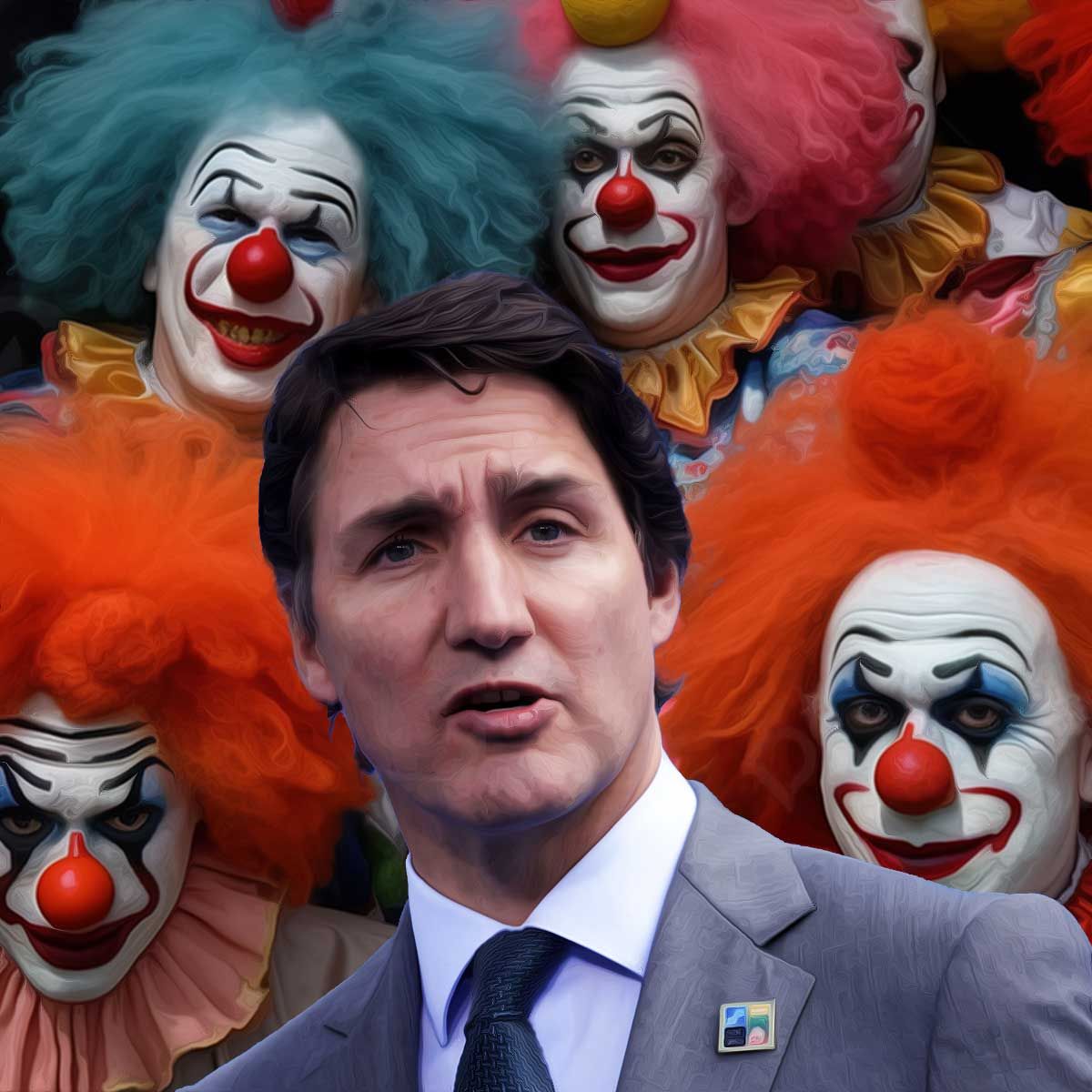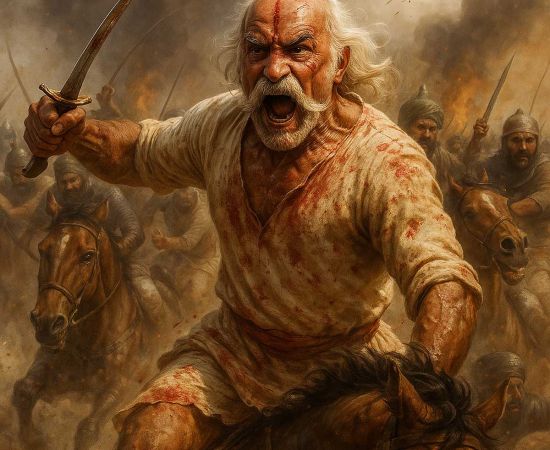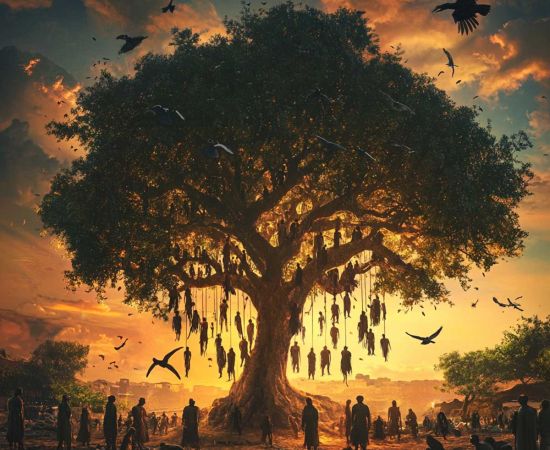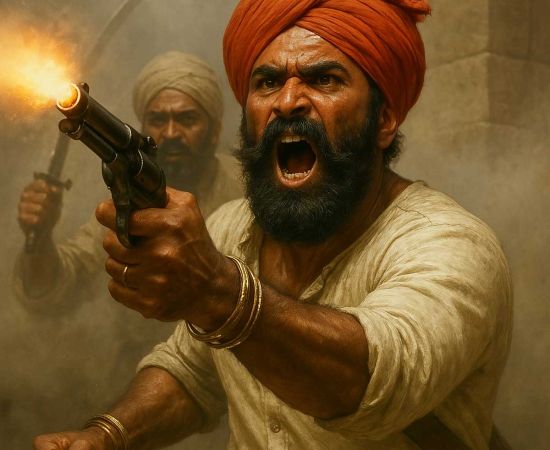MORE COVERAGE
Twitter Coverage
Satyaagrah
Written on
Satyaagrah
Written on
Satyaagrah
Written on
Satyaagrah
Written on
Satyaagrah
Written on
JOIN SATYAAGRAH SOCIAL MEDIA
In the interpretation of Islam, any pictorial representation of Prophet Muhammad is an anathema, something that is strictly prohibited and even regarded as ‘blasphemy’ and calls for beheading

Any sort of depiction of Prophet Muhammad draws a fierce pushback from Muslims around the world. As per contemporary interpretation of Islam, the pictorial representation of Prophet Muhammad is an anathema, something that is strictly prohibited and even regarded as ‘blasphemy’.
The textbook definition of blasphemy states that it is an action or offence of speaking sacrilegiously about God or sacred things. But for an overwhelming section of Muslims across the globe, any attempt at the portrayal of their beloved Prophet, including well-meaning ones, comes under the purview of blasphemy, which attracts capital punishment, according to the Islamic texts.
Therefore, any attempt made to depict Prophet Muhammad inevitably leads to staunch criticism and calls for the beheading of the person responsible for committing such an “effrontery”. This is what led to the death of French teacher Samuel Paty, who was rumoured to have reproduced the caricatures of Prophet Muhammad first published in satirical magazine Charlie Hebdo in 2005 in his class.
An Islamist, driven by the desire to avenge blasphemy against Prophet Muhammad and with the sanction of the Islamic scriptures that justify inflicting punishment on perpetrators of blasphemy, beheaded Paty in broad daylight against what he presumed as an insult of his Prophet and Islam.
 |
This pattern of violence and barbarity against those accused of blasphemy against Islam and Prophet Muhammad is a common occurrence around the world. Cases of people being thrashed, maimed or killed on the charges of blasphemy routinely emanate from Islamic countries, including Pakistan, where charges of blasphemy are often used to harass minorities and settle personal conflicts.
However, this scourge of violence in the name of blasphemy against Prophet Muhammad is not just limited to Islamic monarchies and dictatorships in the Middle East. Even in countries that are secular in nature, for instance, in India, Islamists do not flinch from using violence as a tool to exact revenge on those who are perceived as committing blasphemy. Kamlesh Tiwari, the founder of the Hindu Samaj Party, was murdered in broad daylight in 2019 for his remarks on Prophet Muhammad, made more than 4 years ago and for which Tiwari was imprisoned for several months.
More recently, a 27-year-old Hindu man, Kishan Bharwad, was shot dead by Islamists, over a post that Muslims found offensive. Kishan had shared a video that showed an image of Prophet Muhammad. But this did not sit well with Muslims, who considered depiction of the Prophet as blasphemy that must be recompensed with the strictest punishment. Kishan was killed over the video, with none of the prominent Muslim leaders condemning the violence or expressing solidarity with the family of Kishan Bharwad who was targeted and gunned down over ‘blasphemy’.
But has it always been ‘blasphemous’ to portray Prophet Muhammad since the inception of Islam? Is the opposition to the depiction of Prophet Muhammad prescribed in the Islamic scriptures or is it a modern-day construct ossified by adherents of radical strands of Islam? What does the Holy Quran say about it? And what is the Deobandi stand on the issue?
Let us examine what the Islamic texts talk about the representation of Prophet Muhammad and historical precedents if there are any, of the depiction of the Muslim prophet.
 |
What does the Quran say?
As per Quran, the holiest text for Muslims, there is no explicit ban on images of Allah or Prophet Muhammad, be they carved, drawn, or painted. However, most contemporary Muslims worldwide abide by the ban, rooted largely in the religious commandments by Islamic scholars.
These scholars cite specific verses from Quran to justify their rulings against images of the Prophet and Allah. For example, they refer to chapter 42, verse 11 in the Quran, which says: “[Allah is] the originator of the heavens and the earth… [there is] nothing like a likeness of Him.”
This verse is often cited by Muslims to claim that Allah cannot be depicted in an image by humans, such is his magnificence and splendour. Any attempt to capture him in an image is seen as an insult to Allah. The same is extrapolated for Prophet Muhammad.
In addition to this, Muslims also cite verses 52-54 of Chapter 21 of the Quran to argue why the portrayal of Prophet Muhammad and Allah is proscribed in Islam. The verses read: “[Abraham] said to his father and his people: ‘What are these images to whose worship you cleave?’ They said: ‘We found our fathers worshipping them.’ He said: ‘Certainly you have been, you and your fathers, in manifest error.’”
These verses form the bedrock of the Muslim belief that images can lead to idol worship or idolatry, meaning that images, instead of manifesting the representation of the divine being can be an article of worship and reverence. Islamic scholars believe it is to avoid this temptation towards idol worship that depiction of Allah and Prophet Muhammad is barred in Islam.
 |
What does Islamic texts claim?
Hadiths or Islamic texts, which bear the stories and anecdotes from the lives of Muhammad and his companions, forbids pictorial representation of Allah, Muhammad, and all other prophets, including Jesus Christ and Moses.
More broadly, not just Prophets but Islamic traditions discourages the depiction of living beings, especially human beings. The Hadiths contain injunctions against images of any living being, which is then extended by Muslim fundamentalists to the prohibition on depictions of Muhammad. This is why Islamic art has been predisposed to be more abstract and decorative, unlike the European art form that entails the representation of human beings as its integral part. Whereas the Islamic art form majorly uses Quranic verses as embellishments on walls of mosques or at other places of importance in Islam.
What is Deobandi Islamic seminary’s take on visual representation of Prophet Muhammad?
One interesting perspective on the issue comes from Darul-Ul-Deoband, an Islamic seminary in India that gave rise to the Deobandi Islamic movement. Though it vigorously opposes materialistic representation of the Prophet in any form, it, however, claims that visualising Muhammad in dreams is acceptable.
The official website of Darul-Ul-Deoband bears answers to a host of questions regarding whether it is permissible in Islam to dream about Prophet Muhammad, which is nothing but giving a tangible form to the Islamic prophet. However, interestingly, none of the responses to these questions declares dreaming about Prophet Muhammad as haram or forbidden by the Islamic laws. Instead, it encourages questioners to keep having such dreams bearing a recognisable form of Prophet Muhammad.
Were pictures of Prophet Muhammad always forbidden?
Even though the Quran does not explicitly ordains the banning of images of Prophet Muhammad, there is a difference of opinion on the vexed issue within the Muslim community. While the Sunni sect strictly follows the ban, the Shia sect is relatively less stern on the prohibition of images of the Prophet. Facsimiles of images of the Prophet, chiefly from the 7th century in Persia(Iran), can still be found, which speaks to the acceptance of such practices hundreds of years ago.
According to Islamic scholars, the depiction of the Prophet in various forms such as miniatures and pictures are present in the Iranian context, in the Turkish context, and even in the central-Asian context. However, one notable context where the portrayal of the Prophet in image or picture form is conspicuously missing is the Arab context. The Arabs, which follow a puritanical version of Islam, consider the visual depiction of the Prophet and Allah strictly inadmissible and an unpardonable offence, for which the culprit must be meted out with the harshest of punishments.
This is predominantly the reason why the Arabic art form hardly involves the representation of living beings, much less the Prophet and Allah. However, despite such reservations surrounding the reproduction of the Prophet’s image, some maverick Muslim artists—dating from Mongol to Ottoman empire—have displayed the audacity and courage of rendering portraits and sketches of the Islamic Prophet. A majority of them, scholars argue, drew the pictures out of love and veneration, not intending idolatry.
Some of these illustrations were not clear depictions of Muhammad but representations where his face was covered with a veil. In other cases, he was represented as a flame. However, in many images from before 1500 AD, his face is visible. With calligraphy being the key medium of the public religious art form in Islam, many representations of the Prophet were developed as a decorated visual arrangement of texts about Muhammad that was showcased as portraits might be.
Even then, pictures of the Prophet and Allah were considered as a luxury item, restricted only to a select group of people and not to the entire public, lest it would trigger outrage. However, this tolerance to the depiction of the Prophet deteriorated dramatically with the advent of Christian imperialism in Asia and the Middle East. In an attempt to draw a distinction between Islam and Christianity, which had a history of public iconography, Muslim religious leaders in medieval times upped their rhetorics against pictorial representations, and pictures of Muhammad started to disappear.
 |
Even as Muslims clamped down on the portrayal of Prophet Muhammad, it is important to note that even before their pushback, there were hardly any simple portraits of the Islamic prophet. Most of the renditions were related to the much-vaunted Night Journey and his ascension to heaven, which again proves that there has been pronounced aversion among Muslims to the visualization of their Prophet.
With the arrival of social media and the internet, coupled with the rise of Islamic extremism, this aversion to depictions of Prophet Muhammad has assumed epic proportions. Any visual representation of Prophet Muhammad or Allah, even those that are not vulgar or disrespectful in attitude, face severe backlash from the Islamists, who consider it as an insult to their Prophet and therefore deserving of being responded with violence.
The deaths of Samuel Paty, Kishan Bharwad, Kamlesh Tiwari, Charlie Hebdo journalists, and many others killed in the name of blasphemy is the fallout of the growing Islamic radicalism and borne in the intense conviction that visualizing Prophet Muhammad is against the laws, and hence worthy of capital punishment.
References:
 Support Us
Support Us
Satyagraha was born from the heart of our land, with an undying aim to unveil the true essence of Bharat. It seeks to illuminate the hidden tales of our valiant freedom fighters and the rich chronicles that haven't yet sung their complete melody in the mainstream.
While platforms like NDTV and 'The Wire' effortlessly garner funds under the banner of safeguarding democracy, we at Satyagraha walk a different path. Our strength and resonance come from you. In this journey to weave a stronger Bharat, every little contribution amplifies our voice. Let's come together, contribute as you can, and champion the true spirit of our nation.
 |  |  |
| ICICI Bank of Satyaagrah | Razorpay Bank of Satyaagrah | PayPal Bank of Satyaagrah - For International Payments |
If all above doesn't work, then try the LINK below:
Please share the article on other platforms
DISCLAIMER: The author is solely responsible for the views expressed in this article. The author carries the responsibility for citing and/or licensing of images utilized within the text. The website also frequently uses non-commercial images for representational purposes only in line with the article. We are not responsible for the authenticity of such images. If some images have a copyright issue, we request the person/entity to contact us at satyaagrahindia@gmail.com and we will take the necessary actions to resolve the issue.
Related Articles
- 23 Jan to 29 Jan - 2022 - Hindus under attack: Bulletin roundup of persecution, discrimination, and hate crimes against Hindus
- More videos of Maulana Usmani has surfaced showing how he openly called for violence and said, ‘CDS Bipin Rawat’s death was Allah’s work, Muslims should be prepared to kill or die’
- Mohammedan Irfan Siddiqui, who was serving jail time for raping a Dalit woman on his release comes out and kills her brother Hiralal Gujrati: Hiralal’s wife told, “My husband was very scared. He wanted to leave Delhi"
- Online Syndicate of radical Islamists that was targeting people for demanding justice for the slain Hindu Youth is exposed by Social Media user: Kishan Bharwad murder case
- Victims of hate crime Rupesh Pandey, Lavanya, and Kishan gets forgotten while hijab wearing Sharia loyalists get echoed in Supreme Court: A tale of two Indias
- In yet another horrific incident of grooming jihad Mohammad Yasin, a supplier of ayurvedic medicine killed his second wife ‘Zara’ earlier a Hindu girl 'Shiva Vishwakarma': Left their three-year-old girl child outside the house
- Maulana Usmani says Muslims must continue to defend the honour of the Prophet without fear, terms it ‘peaceful mission’: Old videos show how Maulana was greeted with chants of ‘Sar Tan Se Juda’
- Tales of Fraud, funding, forced religious conversion and insulting Hindu gods and goddesses after brainwashing: How tribals were converted to Islam in Gujrat - “Aapka paigam London pahucha diya hai, achha kaam ho raha hai"
- Pasha, Shahid, and a juvenile brutally stabbed 22-year old youth Chandru an apprenticeship in the railway department to death for speaking Kannada and not Urdu in Karnataka: Mob brandished swords and knives
- If only India’s partition chilling wound was not enough, Gandhi did his last protest again only to blackmail India into giving 55 crores to Pakistan, dragged Hindu, Sikh refugees seeking shelter in mosques to die in cold: And we call him Mahatma, not for
- Islamic revivalist movements in Bharat and Deoband’s link to Taliban
- An attempt of Land Jihad bites the dust as Supreme Court orders 1654 acres of land back to the State Government and that it does not belong to Dargah Hazrat Hussain Shah Wali as Waqf Board claimed
- 16 Jan to 22 Jan - 2022 - Continuing attacks on Hindus: bulletin roundup of persecution, discrimination, and hate crimes against Hindus
- Devkinandan Thakur's statement is a slap in the face of the Islamist hoodlum from Hyderabad - “Many more Yogis and Modis standing in line…”
- In another incident of ‘Land Jihad' how property in Shiv Shakti society of Mora, Surat, came in possession of Waqf Board: Gandhinagar based trust claims that Board is illegally taking over properties by misusing the Waqf Act, 1995



























